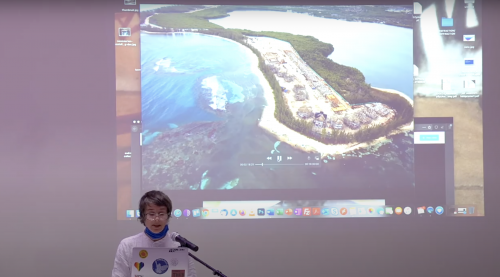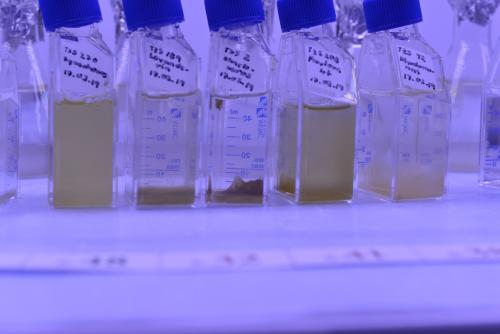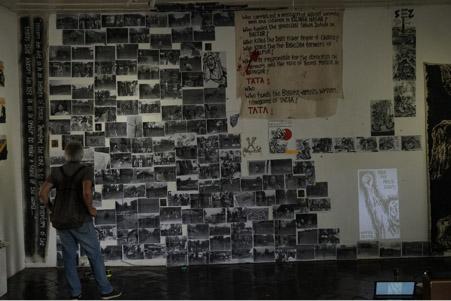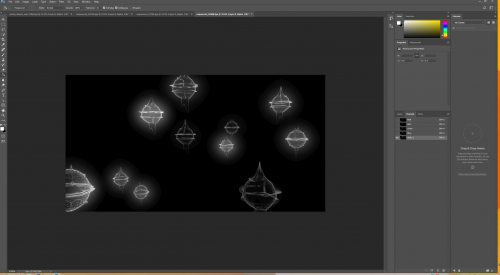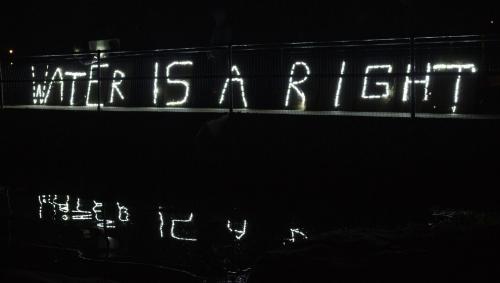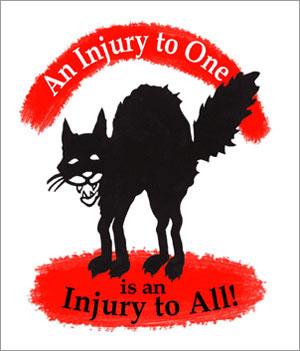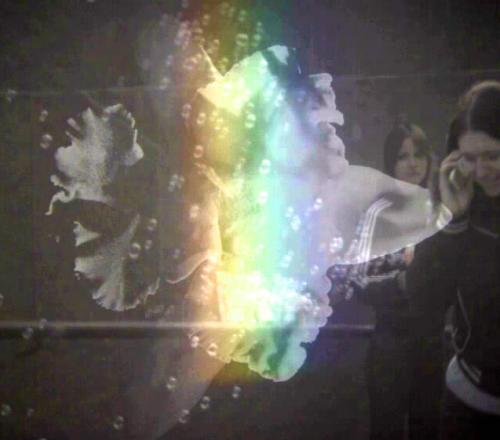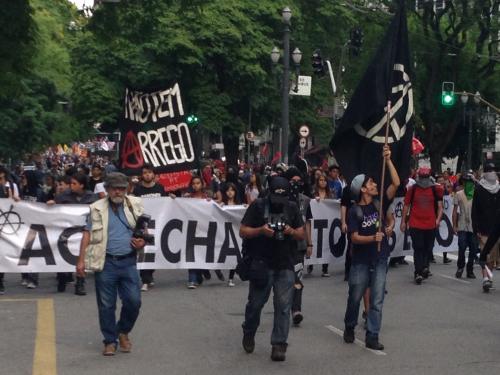The surreal cleft between the reality of war and its virtual manifestations grows nearer, yet it becomes disjointed every day. Take Harun Farocki’s Serious Games (2009–2010), a multiscreen video installation in which Farocki examines the use of images in psychological warfare. In this installation, which investigates the use of video-game technology to train military forces, impoverished characterizations concerning ‘the enemy’ are continuously generated and advanced in a simulated landscape. In one scene, a middle-aged Afghani man tries to prompt a conversation with US Marine by asking a about kids and a love interest; the forced interaction is terse and helps to explain how this ‘democracy’ project was stillborn from the beginning. How many of public watching this installation in different museums of Europe recently would draw a link between Farocki’s sharp observations of and their current questions, like: Where did Daesh – known in Western media as ISIS – come from? How did the incessant migrant flow turn into a crisis in Europe? How did it become part of indecent negotiations between EU and Turkey? Why are populist anti-immigrant political parties on the rise?
‘Serious Games’ could be an apt metaphor for the recent history of Mesopotamia. It can be argued that the borders and state formations that followed the Sykes-Picot agreement did not correspond to the actual material reality of the region, namely its geography and the complicated history of its ethnic groups. The formation of Israel and its declaration as an independent Jewish state in 1948, followed by the forced Palestinian flight from the land, added layers to the unrest. Today it is clear that the colonialist map drawn up to divide Mesopotamia, to further British and French interests in the post-Ottoman period, does not work anymore. The opening of the Suez Canal was the first symptom of this crisis. Today, the historical centers of Arab civilization – Aleppo, Damascus, Baghdad – have disappeared. Most of their people are refugees; there is a “double-Palestinianization,” as Yassin Al Haj Saleh, a Syrian activist who escaped to Turkey, calls it. ‘Serious Games’ shows how the game has revealed itself. After the recent US occupation of both Afghanistan and Iraq, the constructed imagination of these places through the use of a computerized war game, where people “appear without their shadows,” to quote Farocki, has created more battlefields in the region. To some, everything looks like a video-game fantasy. A widely quoted English youth nicknamed Ebu Sümeyye El-Britani from Daesh has supposedly said that, “fighting on the frontline in Syria is much better than playing the computer game Call of Duty.”
The Rojava Cantons in Syria, of which Kobanê is part, stand not only as a symbol of the Kurdish independence that has been long dreamed of but also as a symbol for stateless autonomous existence in the world today. The Rojava Cantons declared a stateless, non-capitalist constitution of equalities predicated on direct democracy. Through citizen councils, the Rojava Cantons model a new form of government that protects itself from statist power hierarchies fed by the spoils of capitalism. Looking at Mesopotamia today, Rojava stands as the sole place to respond to the texture of communities living side by side for centuries and to promise co-habitation not only for the Kurdish but for all the communities existing within it – Armenians, Yezidis, and Turkmens – while resisting a division according to ethnicity or religion especially enacted through the inhuman agency of Daesh. With its (currently closed) border on Turkey’s Suruç, Kobanê was the sparkplug for communication and help for the cantons in the middle of ongoing, borderless violent chaos. Many Kurdish and Turkish activists ran to the border to join the YPG/YPA ranks, to provide support, disregarding the Turkish forces who protect Daesh.
The social contract proposed in 2012 in the Rojava Cantons, stands out as the sole democratic proposal coming from the peoples of the region and is a clear break with the traditional government structures that have failed there in the past. The Kurdish Supreme Committee (Desteya Bilind a Kurd, DBK) was established by the Democratic Union Party (PYD) and the Kurdish National Council (KNC) as the governing body of Syrian Kurdistan in July 2012. In November 2013, the PYD announced an interim government divided into three non-contiguous autonomous areas, or cantons: Afrin, Jazira, and Kobanê. The cantons have declared that the natural resources of Rojava will remain the collective property of the region’s people, and any potential revenues will be equally invested back in the people in the forms of a commons. The egalitarian council structures and the collectivization of resources stand in opposite to the confessional conservatism of Turkey’s ruling Justice and Development Party (AKP) and its heavily corporatist politics. On 17th March this year, the Federation of North Syria-Rojava was declared. The 200-person Constitutive Assembly – composed of Kurds, Arabs, Syriacs, Assyrians, Armenians, Turkmens and Chechens from Efrîn, Cizîrê, Kobanê, Girê Spî cantons and the Şeddadê, Aleppo and Şehba regions, and presided over by the co-presidents Hediye Yusuf and Mensur El-Selum will meet in six months to prepare a new social contract. So far none of the states part of the Syrian crisis officially acknowledged this decision. The newly established system is expected to replace the autonomous cantons.
This movement responds to what the PKK (Kurdistan Communist Party) leader Abdullah Öcalan initiated in his 2004 book ‘Defending a People’, after he had been arrested and imprisoned by the Turkish government. In the most recent municipal elections in Turkey, in 2014, the only hopeful results, alongside some members of the LGBTI community running for city councils in Istanbul, came from the southeastern Kurdish region. There, the HDP, known to be the official policy making face of the Kurdish struggle, acquired many municipalities that were co-chaired by women from different walks of life and from existing historical ethnicities, the aforementioned Armenians, Yezidis, and Turkmens, as well as Orthodox Syrians. For the ones following the way Öcalan’s democratic confederalism project developed, this can be interpreted as a result of adopting American anarchist Murray Bookchin’s libertarian municipalisms, which aim to create citizens’ assemblies in towns and urban areas, which join together in confederation to replace the centralized state apparatus with a set of local and bottom-up, direct-democracy councils. For Öcalan’s prison curriculum spread from what is offered by eco-feminism, new readings of Marx, such as Kojin Karatani’s Transcritique, and Bookchin’s social ecology theories as described above.
After Daesh was fought out of Kobane in early 2015, other solidarities around reconstructing and rebuilding the town started. When 37 youth from socialist organisations in Turkey killed by a Daesh suicide bomber in Suruc while on their way to help rebuilding Kobanê in July 2015, the war has officially extended to Turkey. Daesh was also responsible for a major attack in Ankara that killed over 95 people who gathered for Labour Peace Democracy rally from various democracy oriented NGOs, left parties and labour organisations. Right now, Turkey’s civil society is stuck in inertia. The government pressure on freedom of speech has arrived to a level where there is almost no critical voice audible. Journalists Can Dundar and Erdem Gul are accused with being traitors since they published images of artillery carrying trucks on their way to Syria. The academics who had signed a public petition calling the government to restart Kurdish peace process are detained and are forced to resign. This already dark picture is framed by Daesh led terror attacks on one side, and the battle between Turkish army and the PKK militants and supporting youth in southeastern cities against their declaration of self-rule on the other with revenging attacks in Ankara committed by TAK (Kurdish Freedom Falcons) as answers to violence against the civilians in the south east. Just in March a suicide bomber from TAK exploded a car in Ankara in a busy square killing 38 civilians and another suicide bomber from Daesh killed 5 people in the central Istiklal Street of Istanbul. Many political analysts comment that the civilian losses in such attacks affects the international prestige that PYD gained fighting Daesh in 2015.
An important digression: These connections can be interpreted as struggles and conflicts triggered by and dealing with father figure based hierarchy in the collective consciousness. It is not easy to be a fatherless daughter or a daughter that can break free from a father figure in this geography; it goes without saying that Atatürk is the ultimate father figure for secular republicans, as Erdoğan is for neoliberal fundamentalists, and Öcalan for the Kurdish independence movement in Turkey. Even though Öcalan himself initiated a critical space for women in the independence movement by encouraging them to form an independent army and independent institutions in 1993, the recent visible turn in TAK’s attacks in Turkey makes us question how that critical space is internalised by the rest of the movement. Rojava’s constitution is the first example of its kind in the region that claims gender equality. The figure of the independent Kurdish women guerilla quickly became a public rebranding campaign, the face of Kobanê, the height of war with Daesh, especially in the diametrically opposed approach to women explicated above. French Elle editor-in-chief Valérie Toranian penned a farewell letter titled “Résiste!” on 26 September 2014, accompanied by a photoshopped photo series depicting Kurdish women guerillas from Kobanê, advocating for the area but from a pseudo-feminist position. She never refers to the very important notion of equality stated in Rojava constitution. It is worth noting that this attitude is quite in line with portraying women in headscarves or burkas as vulnerable victims of Islamic ideology, similarly to the computerized enemy stereotypes of US Marines in Farocki’s work.
The female body always provides a unique space for ideological embodiment. The image of the vulnerable woman in a burka – as opposed to a ‘modern’ symbol, like Marianne standing for the French nation – has always been used as both justification of and case for the war for democracy. This time the women guerillas were stamped and lionized to fight for their lives against Daesh the monster. Pointing to the phenomenon of ‘resistance chic’, the fashion world has taken these links further to, say, a particular pair of green overalls designed by H&M for their summer 2014 season that directly referenced a peshmerga uniform. In this respect, an unforgettable image comes from Karl Lagerfeld who performed a faux-feminist protest on Chanel’s catwalk for the closing of Paris fashion week in 2014. Another good example of such feminist populism was performed by the imprisoned members of the Russian band Pussy Riot wearing colorful balaclavas, which clearly allude to Zapatistas. After being worn in such a context, the balaclava could not help but become a pop object, just like the Che Guevara profile. Not coincidentally, one of their balaclavas was auctioned online for a Kobanê fundraising campaign as a “collectible contemporary art object.”
Fortunately, the Kurdish female guerrillas’ place in the independence movement is more deeply historically rooted. The PKK and the Iraqi Kurdish peshmerga have had women’s brigades in their guerrilla forces for decades. For many women, “going to the mountains” (directly translated from the Turkish phrase commonly used for joining the PKK) meant education, confidence, and a sense of solidarity lacking for women in the very hierarchical, traditional Kurdish society. There is a lot of misinformation circulated by Turkish government trolls in social media on the women guerillas, that they mainly go to the mountains to become sex slaves. On the other hand, it is also known that with 2006 women of the region started depending on collectivities organized by all-women military units to defend themselves from violence, unwanted marriages, and honor killings. Shahrzad Mojab, who edited Women of a Non-State Nation: The Kurds (2001), is known to be one of the early names to work on women’s subject position in the Kurdish independence movement. She also points to the lack of focus in ‘Western’ women’s studies programs on Kurdish women in this struggle. For her, one of the precedents for women fighting in Kobanê clearly comes from Kurdish women guerrillas who went to the Kurdish mountains on the Iranian border in the 1970s to resist the Iranian revolution.
Daesh has nourished itself in the historically deep rooted patriarchy of Mesopotamia. Today the women fighting in the name of freedom and equality as autonomous bodies produce an almost mythological front to fight against for the angry and disillusioned young men who decided find their transcendence in violent, populist and fundamentalist groups such as Daesh as they are fundamentally excluded from the capitalist hierarchies. Even the Yazidi women, known for their obedience to their historical traditional society structure, started to join the ranks of fighting women after the big plight and massacre by Daesh. The new discipline of “jinology” (the science of women) – spearheaded by new educational structures founded in the cantons – constructs an alternative, cross-disciplinary account of mythology, psychology, science and history. Women are taught that they are the main economic actors and those with responsibility for ethics and aesthetics, freedom and beauty, content and form. Western feminists were not able to position themselves in solidarity with these fighters, and thus the feminism of photoshopped pictures cannot be translated into a feminism discussing subject positions in real terms. Is it because women in arms is still a taboo topic in terms of political subjectivity?
Hito Steyerl’s recent performance lecture, ‘Is the Museum a Battleground?’, opens with her investigating remains on an actual battlefield – not a computer-generated one – where a childhood friend, Andrea Wolf or Sehît Rohanî (the name she adopted when joining the PKK), was killed in an ambush by the Turkish army. This work is connected to Steyerl’s earlier video November (2004), which tells the story of Wolf as she drifts from B movie kung-fu fighter to martyr of the Kurdish liberation movement. Going back to the question of what the Kurdish women guerrilla fighters may signify in magazines such as Elle, this work is helpful in that it analyzes the many roles assigned to Wolf: an ‘attractive’ woman and a friend; a female fighter in a fictional story who uses martial arts, and an armed revolutionary who also teaches martial arts to her fellow female fighters; a martyr for the Kurdish cause; and a terrorist in hiding, according to the Turkish and German governments.
Rather than their subject positions, the faces and torsos of Kurdish female guerrillas are probably necessary to generate sympathy in the West by rendering the women in a language that the West can understand, a language similar to nineteenth-century postcards of exotic colonized women or fantasy triggering Amazons. At the end of the day, the West has a lot to fear from the new autonomous bodies coming together in Rojava, bodies that can set the control models loose and render them useless. The women fighters prefer to call themselves “protection units.” They say it is important to recognize that women are not just fighters in Rojava, as it is covered in the Western media, they are indeed in all fields. In order for women to be recognized as agents in society, the whole system needs to be changed. Because for them, the struggle is also against male domination within the Kurdish community and in the larger Mesopotamia.
The critic Tom Wolfe coined the term “Radical Chic” in his 1970 satirical essay penned for New York magazine “Radical Chic: That Party at Lenny’s.” Here, Wolfe highlights the absurdity of Leonard Bernstein, the conductor of the New York Philharmonic, and his friends hosting fundraising parties for the Black Panthers. Just one year before that by 1969, the Black Panther Party newspaper officially stated that men and women are equal and instructed male Panthers to treat female Party members as equals. Wolfe speaks of "radical chic" stemming from a "nostalgie de la boue", a dialectical effect of a certain class estrangement. The inherent longing aims at something that has been lost. Yet ‘boue’ – mud or dirt – emphasizes the level of the social contexts that were left behind. For our context, ‘radical chic implies a sort of neutralisation and makes us ask the question: Are new resistance movements being normalized as an image of the radical yet again? Is this yet another cycle of “Radical Chic,” as fighters reappear as fashionable topics and attitudes? The same images of people behind barricades and in balaclavas throwing stones at the police are repeated in newspaper coverage ad infinitum. Like Hong Kong’s yellow umbrellas, they may be tagged as popularized imagery too. Iraqi Kurdish pop singer Helly Luv’s video ‘Revolution’ similarly normalizes the revolutionary practice of female fighters for the Western gaze. Looking at the artistic practices that try to think with and learn from different revolutionary experiences, the symbolic violence that comes with ‘radical chic’ feels inevitable in outcomes such as the new public parliament building in the city of Derîk, Cezîre Canton initiated by Jonas Staal as part of his New World Summit project.
In an interview conducted by Ruken Isik for her PhD studies, the YPJ fighter Roza Haseke says “We, as women, need to break the mentality that controls women. We need to know ourselves, know our agency, our strength, we need to protect ourselves.” They follow the examples of women revolutionaries like Sakine Cansiz and Leyla Kasim, Berivan Şengal and Viyan Peyman. Long before them is Baciyan-i Rum (Anatolian Sisters) of 14th century, an organisation which educated women in military, economics and religion to sustain themselves and their families living in the region. Berivans, Viyans and Rozas still leave us with the question of martyrdom, the ultimate form of self-sacrifice in the history of this geography colonized under the name Middle East. If the rebranding of Kurdish independence addressed above is to take root here, it should happen more through life and solidarity, instead of the death and discord that we all know too well. When that happens, it will shift the language of history. Time will show towards which direction, whether autonomy or transcendence.
Ovul O. Durmusoglu is a curator and writer. This paper was first held at Dhaka Art Summit February 2016. She has worked on several exhibitions with Susanne M. Winterling including the radical incomplete series.
1. Paramaz Kizilbas aka Suphi Nejat Agirnasli in his farewell letter before departing for Rojava, December 2014
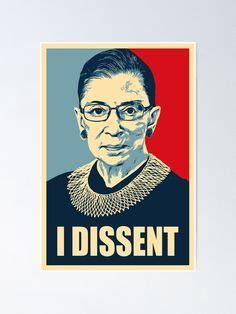

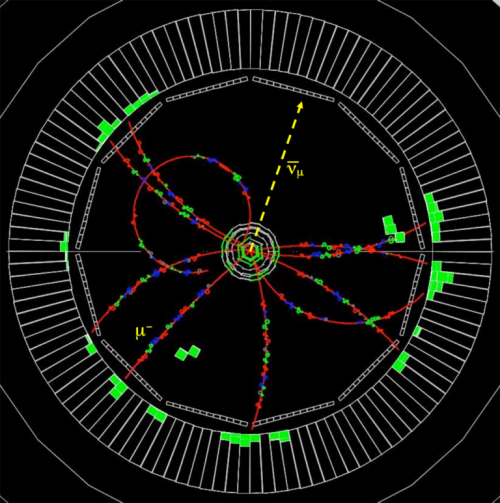
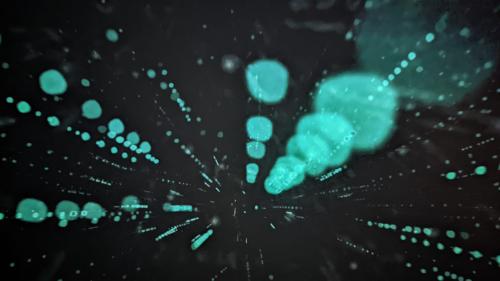

![Blackwash [working title]](/sites/default/files/styles/medium/public/56fe8ebf-7f16-4486-a251-6d85b1e906c3_4_5005_c.jpeg?itok=rIFeYRMo)
